Liver Cancer - Traditional Chinese Medicine Treatment
Information provided/updated by:
Professor Bian Zhaoxiang,
mAssociate Vice President (Chinese Medicine Development),
Director of Clinical Division, School of Chinese Medicine
Introduction:
In this article, Professor Bian Zhaoxiang introduces us to how traditional Chinese medicine treats liver cancer.
A. Overview (including the use and differences of organs, systems, traditional Chinese medicine and Western medicine terminology)
B. Etiology/Symptoms/Diagnosis
C. Treatment Methods
A. Overview (including the use and differences of organs, systems, traditional Chinese medicine and Western medicine terminology)
The liver is the largest internal organ in the human body and one of the most important organs. It is closely attached to the right lobe of the lung, located under the diaphragm, and to the right of the stomach. It is pyramid-shaped and divided into left and right lobes. Below the liver are the gallbladder, small intestine, and pancreas.
Most cases of liver cancer in Hong Kong are caused by hepatitis B. With everyone born in Hong Kong in the past 30 years having been vaccinated against hepatitis B, it is believed that the number of cases of liver cancer caused by hepatitis B will decrease in the future.
Other causes include:
・Hepatitis C cirrhosis,
・Alcoholic cirrhosis, and
・Long-term fatty liver, etc.
In Western societies, the number of cases of liver cancer caused by fatty liver is increasing, mainly due to the increasingly serious problem of obesity.
From the perspective of traditional Chinese medicine, the disease location of liver cancer is in the liver, and the nature of the disease is usually a mixture of deficiency and excess. It is mainly caused by irregular diet, emotional depression, etc. In the early stage, there is spleen deficiency and dampness obstruction; in the middle stage, there is qi stagnation, blood stasis, phlegm-dampness, and toxin stasis; in the later stage, there is deficiency of healthy qi.
B. Etiology/Symptoms/Diagnosis
[Cancer Transformation]
About 60% of the cells in the liver are composed of hepatocytes, followed by cells from the walls of blood vessels and bile ducts. In primary liver cancer, about 90% are derived from hepatocytes. Therefore, "liver cancer" is generally referred to as "hepatocellular carcinoma" in the community.
[Traditional Chinese Medicine View]
Diseases similar to the symptoms of primary liver cancer described in the classics of traditional Chinese medicine include:
・Aggregation-accumulation(癥瘕),
・Accumulation(積),
・Jaundice,
・Distention, and
・Hypochondriac pain, etc.
The "Various Diseases Source and Symptoms Theory, Aggregation-Accumulation Disease Various Symptoms" mentions that "those that are firmly fixed and do not move are aggregations".
The "Ling Shu, Water Distention Chapter" discusses ascites, saying: "In ascites, the body is generally enlarged, similar to cutaneous distention. The complexion is greenish-yellow, and the abdominal muscles are raised. These are its symptoms."
The "Su Wen, Visceral Qi Law and Affairs Discussion" says: "In liver disease, there is pain under both ribs that pulls the lower abdomen, making the person prone to anger."
Traditional Chinese medicine generally believes that liver cancer is caused by liver and gallbladder dampness-heat, liver qi depression and spleen deficiency, and static blood aggregation.
Common symptoms of liver cancer include:
・Upper abdominal or right hypochondriac mass,
・Hepatic pain,
・Jaundice,
・Ascites,
・Distention, and
・Weight loss, etc.
According to the symptoms, it can be attributed to the traditional Chinese medicine "aggregation-accumulation", "sudden mass", "jaundice", "ascites", etc.
Traditional Chinese medicine has long recognized its poor prognosis, such as "sudden mass, there is something hard as a stone in the abdomen, pain like a stab, crying day and night, if not treated, death in a hundred days". This is quite consistent with modern medical descriptions that the survival period of late-stage liver cancer is only 3-4 months.
C. Treatment methods
Early-stage liver cancer
Surgical resection and postoperative radiotherapy and chemotherapy are the main means of treating early-stage liver cancer, and postoperative recurrence is the main concern. The recurrence rate of liver cancer after surgical resection is highest before the third year. The integration of traditional Chinese and Western medicine can improve the treatment effect of liver cancer.
After surgery, in order to prevent the recurrence and metastasis of liver cancer, it can be combined with traditional Chinese medicine treatment. Clinically, the location of liver cancer is in the liver, which is very closely related to the spleen and kidney, so the disease often affects the spleen and kidney. Clinically, it can be treated by fortifying the spleen, emolliating the liver, and tonifying the kidney, such as using Bu Zhong Yi Qi Tang to fortify the spleen and replenish qi, and Liu Wei Di Huang Tang to nourish and tonify the kidney yin. In addition, commonly used drugs also include Angelica, Bai Shao, Yi Yi Ren, Ban Xia, etc.
Late-stage liver cancer
Patients with liver cancer may also receive Western medical chemotherapy and radiotherapy at the same time.
During the process of receiving Western medical radiotherapy and chemotherapy, the patient's healthy qi may be even more insufficient, and the integration of traditional Chinese and Western medicine can improve the situation.
For the handling of the side effects of radiotherapy and chemotherapy, traditional Chinese medicine has its own set of principles and methods.
Radiotherapy and chemotherapy do indeed damage the body. The commonly mentioned chemotherapy belongs to the cold-natured drugs in traditional Chinese medicine, which can easily damage the yang qi. At this time, the treatment uses the method of fortifying the spleen and replenishing qi, or the method of warming yang and tonifying the kidney.
As for patients undergoing radiotherapy, radiotherapy is mostly hot and often injures the body's yin and blood. At this time, the treatment is to nourish the liver and tonify the blood on the one hand, and to nourish the yin and tonify the kidney on the other. Through this method, the toxicity of the drug can be reduced and the patient's resistance can be improved.
Diet therapy can also be helpful, patients should not eat overly greasy food, but should eat some high-protein food.
Overall, the integration of traditional Chinese and Western medicine has a certain effect on the treatment of liver cancer. In this process, patients should pay attention to the following points:
First, pay attention to the characteristics of traditional Chinese medicine, starting from regulating the function of the viscera and bowels. By regulating the human body and improving the microenvironment of the tumor, the purpose of treatment and prevention of recurrence is achieved.
Second, pay attention to regulating emotions. Research has found that among the investigated cases of liver cancer, about 48% are irritable and 25% are depressed, showing that the disease has a great relationship with personality. Therefore, psychological adjustment plays a very important role in treatment.
Third, closely monitor the physical condition, in case the disease recurs, appropriate action can be taken as soon as possible.
(January 2021)




